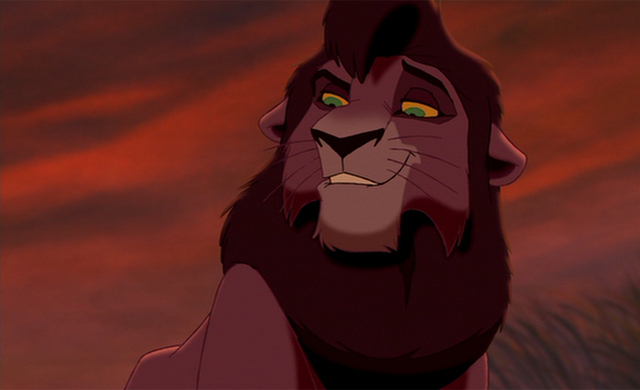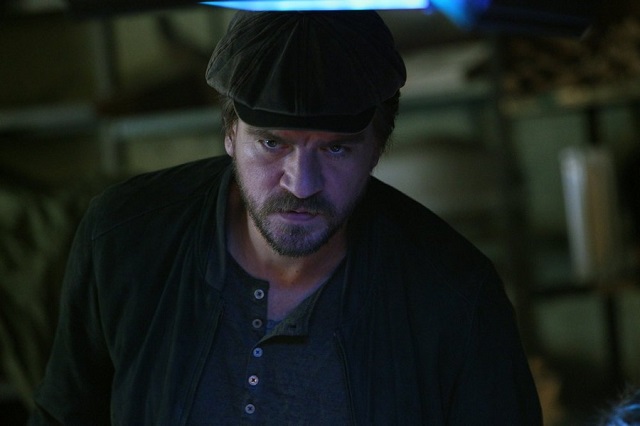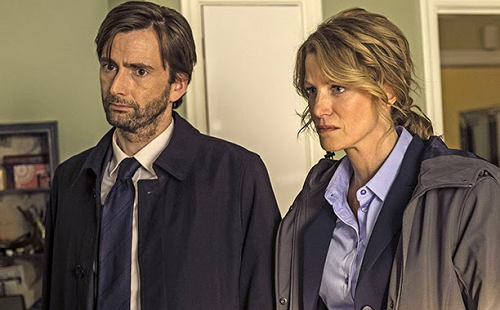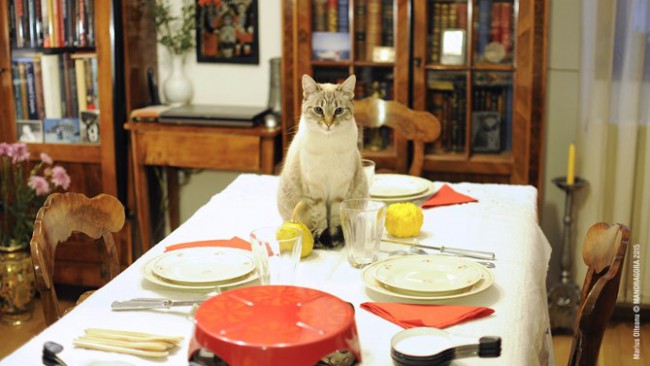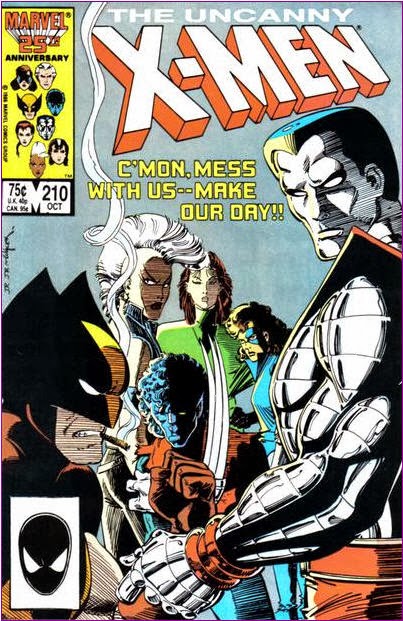 The Lion King II: Simba’s Pride
The Lion King II: Simba’s Pride
Directed by Darrell Rooney
Written by Flip Kobler and Cindy Marcus
Starring Matthew Broderick, Neve Campbell, Jason Marsden, Nathan Lane, Suzanne Pleshette, Andy Dick, Moira Kelly
Is it enough for a movie to not be terrible? On the face of it, this question’s pretty easy to tackle. Any movie, no matter the intended audience or the genre, needs to be more than not awful. But I do wonder if my standards for certain movies should be lowered depending on the context. I bring this up, of course, in reference to direct-to-DVD sequels from the Walt Disney Company. It’s fair to say that no one expects these movies to be on the same level of quality as their predecessors. That’s why, for example, it’s so notable to remember that Toy Story 2 was originally going to be a direct-to-DVD sequel until the executives at Disney realized that, hey, the finished product was looking too good to restrict to home media.
So when I sit down to watch a direct-to-DVD sequel for the podcast, I recalibrate my expectations. I wouldn’t say that I have zero hope for quality, but when I watched the sequel to Cinderella, I wasn’t expecting something as good as the 1950 film. When I saw The Fox and the Hound 2, I wondered if a midquel would only muddy the waters or make the overall story between Tod and Copper more palatable. And when I sat down to watch The Lion King II: Simba’s Pride, I had a modicum of hope, a sliver of faith that I might discover a hidden gem of sorts. Why the turnaround? Maybe it’s because of the legacy The Lion King had left behind in four short years between its 1994 release and the 1998 sequel. And sure, Cinderella had an even longer history in its wake when the folks at DisneyToon Studios began work on a sequel. But The Lion King was, perhaps, a more valuable commodity because it wasn’t specifically appealing to girls.
I’ve talked in the past about Disney’s struggles (perceived or real) in attracting boys to their movies, their characters, their brand. People associate more feminine characteristics with Disney movies, despite some of their most popular works not being girl-centric. (This goes all the way back to Peter Pan, arguably one of Disney’s most lasting pieces of animation, one that opened only 3 years after Cinderella.) The Lion King may be the most successful, critically and commercially, of the many Disney movies that don’t seem to target just the fairer sex. For a long time, it was Disney’s highest-grossing animated film. The Broadway musical spun off from the film is still running on the Great White Way and won’t be closing, I imagine, for a very long time. And even before that show began, or before the characters from The Lion King were mainstays at the Disney theme parks, it’s clear that Disney knew it had an important franchise on its hands. And while they could hope that kids and adults around the country would try out a sequel, I have to assume the DisneyToon Studios animators knew well enough that they couldn’t just toss off a direct-to-DVD continuation. And yet.
It’s almost as if the DisneyToon staff weren’t able to resist their worst temptations, to give into their worst impulses with The Lion King II: Simba’s Pride, which at times feels very much like a weak copy of The Lion King. Even a weak copy of that movie could be fairly enjoyable, right? Unfortunately, this movie too often relies on massively unfunny and obnoxious comic relief from two characters who were my favorites as a kid. Also, the mythology this story tries to create from whole cloth just ends up being too confusing. I have, so it would seem, been waiting to bring up the Nikki-and-Paolo effect on the podcast, and this movie is the best place to employ it so far.
I want to reiterate that effect in this column, because I’ll be honest (though what I’m about to say should not shock longtime listeners): though I’ve often considered the Nikki-and-Paolo effect, I hadn’t planned ahead of time to bring it up on the show. (And I say “often,” but I really mean “I’ve thought about it a couple of times in the last 5 years.”) Fans of the departed TV show Lost will likely remember, despite trying very hard to forget, Nikki and Paolo. These characters were introduced, and subsequently killed off, in the third season as a response to fan outcry. (It is important to note, and I will probably find a reason to discuss this further on the show in the future: listening to fan outcry is never, ever a good idea, because creators will likely realize too late that a massive swarm of angry fans was really just a few very loud people on the Internet, not the majority.) Why, these fans demanded, did we never meet the other crash survivors? We had met roughly 15 people who survived the crash of Oceanic Flight 815, landing on a mysterious island, over the first two seasons. But what about the thirty-odd other folks stranded in this strange place? Why haven’t we met them? Don’t they interact with Jack and Kate and everyone else?
And so, showrunners Carlton Cuse and Damon Lindelof gave us Nikki and Paolo, an attractive young couple who, we are meant to believe, had been on the island with Hurley, Sawyer, and friends from the very beginning, landing on September 22, 2004. Though it wasn’t literally her first appearance or line of dialogue (I think), the first time that Nikki made an impact was at the end of an early season-three episode where Hurley returned to the main castaway camp to report that he’d been abducted by the Others, the people who lived on the island before the plane crashed. The Others released Hurley so he could scare his friends, put fear in their hearts about these strange denizens of an already spooky environment. And one of the reactions from the castaways came from Nikki, who forcefully asked, “Why didn’t you tell us this before, Hurley?” She demanded information. She was concerned for her safety. She was…who was she again?
The problem with Nikki and Paolo wasn’t just that they came off as being massively unlikable. (They were so loathed by fans on all sides, in fact, that Cuse and Lindelof killed them off two-thirds of the way through Season 3, with a self-referential episode that was somewhat funny while also feeling like a rebuke to fans for daring to wish for further expansion of the world, as opposed to the writers realizing they picked the wrong minor issue to fix.) It was that the way they were introduced made no sense. Of course there were other castaways on the island. Of course they had their own stories. We could see them in the background of earlier episodes. But Lindelof and Cuse didn’t present these new characters correctly. Suddenly, our main characters treated Nikki and Paolo as if they’d always been there, as if they’d not only existed in the periphery, but that they were as close to Jack and Kate as Jack and Kate were to each other.
Such is the case in The Lion King II: Simba’s Pride, where we’re meant to believe there’s a whole other group of lions on the outside of the story, waiting to pounce on a golden opportunity to take over. In point of fact, there weren’t that many lions in the original film, which isn’t really an issue. But whenever we were in Scar’s world, near the elephant graveyard that Simba and Nala were warned against visiting, we only saw one lion: Scar. The antagonists in the sequel, led by Zira, a lioness with revenge on her mind, are all designed to put Scar in our minds. Though it’s a very melodramatic dream sequence, when Simba imagines Scar standing over him, until Scar transforms into Zira’s son, Kovu, it makes sense. They look alike. (And this is before Kovu gets into a fight late in the film, receiving a scar over his left eye, just like…Scar.)
So what’s my problem? It’s not that Scar would have amassed followers—we saw that happen in the first film—nor that those followers would be bitter that Scar was overthrown by Simba. It’s that those followers were hyenas in the first movie. There are no hyena characters in The Lion King II: Simba’s Pride, just lots and lots of lions. (And Timon, Pumbaa, and Zazu, all of whom are comic relief and come off as obnoxious, not endearing.) And suddenly, we’re not just at Pride Rock. No, there are Pridelanders and Outlanders, the latter of whom live in a place that seems as if it’s just an expansion of the desolation present in the elephant graveyard. And there are lots of angry lions among the Outlanders, partly because Simba treats them all as second-class citizens, because that’s where Scar was from.
We’re meant to buy the idea that these lions were always present, that the Outland was always a dark parallel of the Prideland. And we need to accept that Simba and even Mufasa were aware of their existence for years. So why aren’t they present in the original film? Revisionist history like this isn’t always troublesome, but the director and many writers of this movie aren’t able to make us believe these drastic changes. Now, don’t get me wrong: The Lion King II: Simba’s Pride has many problems, from dull or manic voice performances (for the latter, I’m looking at you, Nathan Lane); to a story that bit off far more than it could chew; to unsubtle storytelling. I think, though, that the core issue of the movie is this rejiggering with what we were presented in The Lion King. Expanding the world of the series makes sense. Adding more lions makes sense. Making those lions rivals to our protagonists makes sense. But the way the writers incorporate these lions is a dealbreaker.
Gabe and I both agreed on the podcast that The Lion King II: Simba’s Pride is, all things considered, the best direct-to-DVD sequel we’ve seen for the show. (I still have cloudy memories of legitimately enjoying Aladdin and the King of Thieves, but maybe my memory lied to me. We can all find out next summer.) Does it matter that it’s not really a good movie? Is it enough that the people at DisneyToon Studios tried to do better with this film? I certainly give them an A for effort, but I’ll echo here a refrain I often bring up when I review the new Disney Blu-rays: why can’t you give equal effort to everything? With those Blu-rays, it’s in reference to a woeful lack of special features on all but the lucky few Disney films. If a movie comes out on Blu-ray and it’s not a big new release, nor does it have legions of fans, there needs to be a reason for it to exist. Disney may want to make money, of course; still, will people give them that money if the Blu-rays are a weak product?
The Lion King II: Simba’s Pride rode in on a wave of anticipation, in the halcyon days when people weren’t automatically distrustful of direct-to-video movies. I don’t believe that the goodwill people had for the franchise was squandered by this movie, but it represented a noble failure. I’m glad that, for once, the DisneyToon animators tried hard to make a good movie from minimal resources. They didn’t, though, and I fear that we’re never or rarely ever going to see them try again. What a shame.
